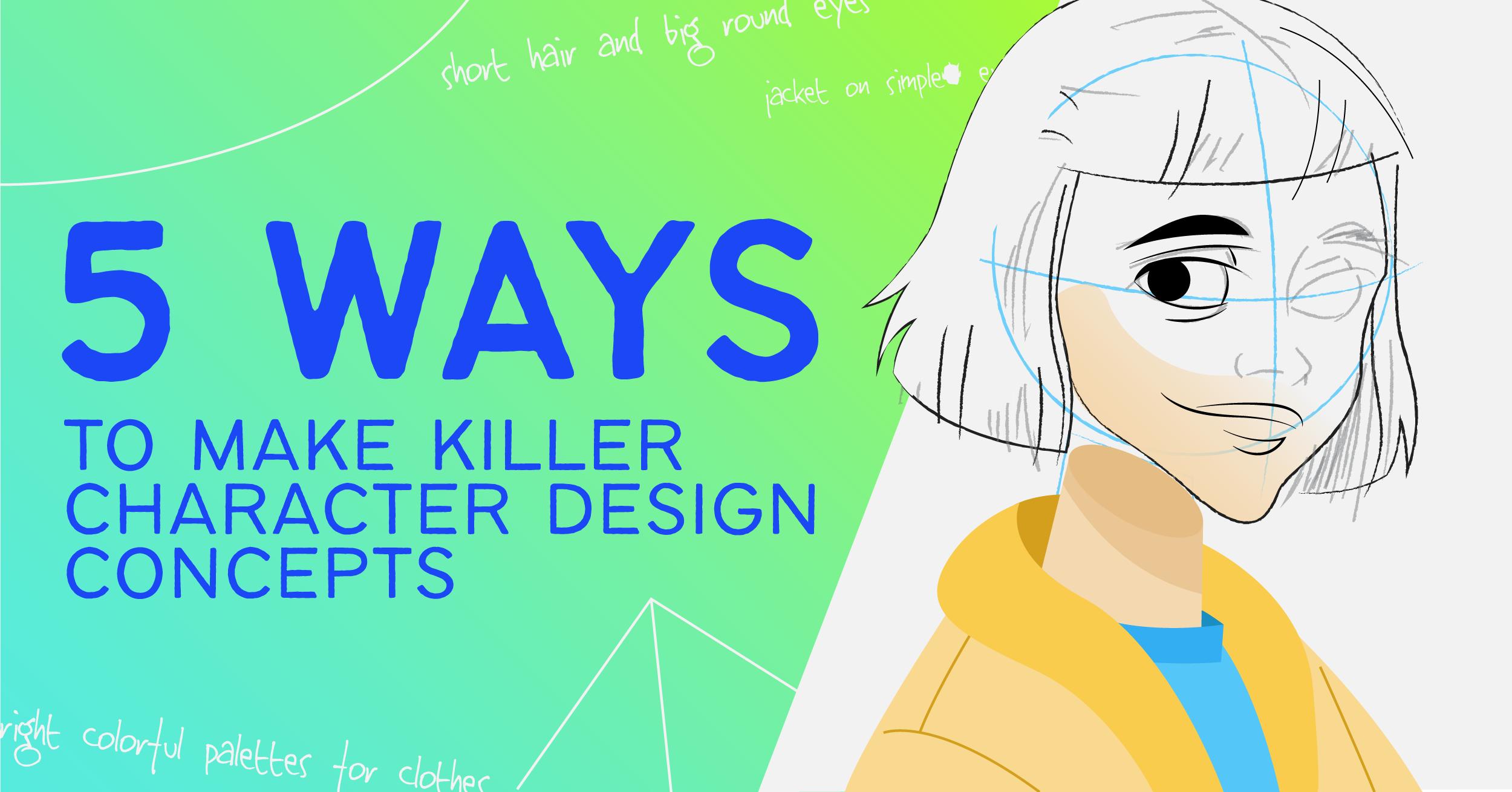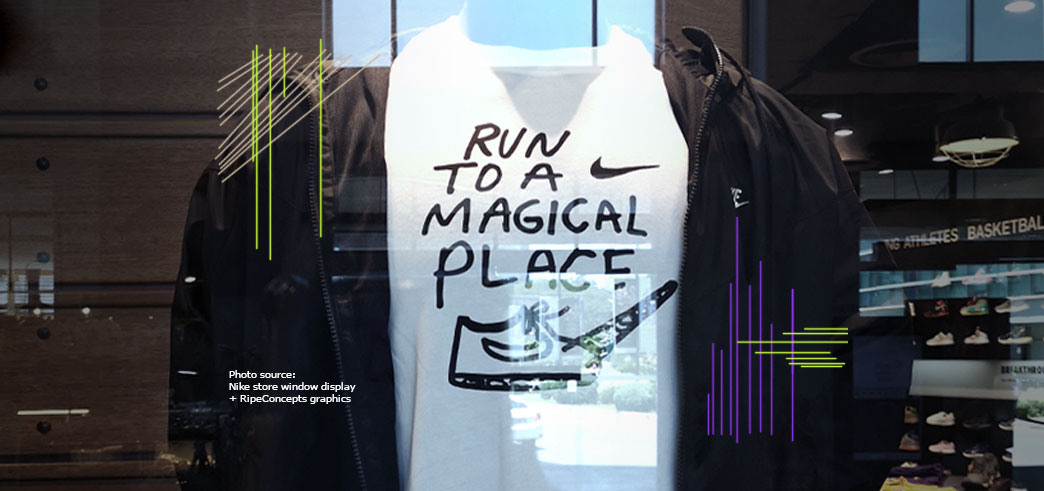How To Make Killer Character Design Concepts in 5 Ways
by Jeanne Mari Horlanda • May 24, 2022
There's something about a show-stopping character design concept that transports you into a completely different dimension. The realm of 2D and 3D animation has produced some of the most iconic character arts in television and film, but did you know that these character drawings had to go through meticulous processes before they were brought to life?
What is Character Design?
Character design is the art of developing characters for animated films, comic books, toys, commercials, and books. The process is slightly complex and is often one of the most sought-after careers for aspiring entertainment artists.
The main goal of character art doesn’t stop at merely rendering well-sketched figures, but rather, integrating well-thought-out personalities and details into the design that will augment the way they tell a story.
If you're looking to create powerful and effective character drawings then you'll want to focus on creating a mind-blowing design concept. Just like any other form of art, the better your idea is, the more successful your final product will be. So how can you go about making that killer design concept? Here are five tips to help get you started:
- Brainstorm character features
Creating a character can be one of the most exciting parts of making art. Whether you're designing a new character for a story, game, or film, there are endless possibilities to explore. The first step in character design is brainstorming a design concept for your character. What clothes would it wear? What color of hair? What would its eyes look like? What would its personality be like? You can also create a rough draft of your character’s profile to piece together its identity:
- Name:
- Age:
- Height:
- Weight:
- Hair color:
- Eye color:
- Physical attributes (moles, scars, blemishes, etc.):
- Place of origin:
Answering these questions can help you furnish a detailed and well-rounded character. Once you have a list of features, you can begin sketching out your character's appearance. This is where you can let your imagination run wild, there are no wrong answers in character design, so don't be afraid to experiment. Try out different hairstyles, clothing, and expressions until you find the perfect combination. With a little bit of creativity, you'll have a unique and memorable character that is all your own.
- Create a Mood Board
A mood board is a great way to help you visualize a character's personality and backstory. By collecting character art, character drawings, and design concepts, you can start to get a feel for who the character is and what their story is. You can also use the mood board to help you come up with ideas for the character's design. By seeing all of the different ways that the character can be represented, you can start to get a sense of what works and what doesn't. And if you're having trouble coming up with ideas, the mood board can provide some inspiration. So if you're looking to create a well-rounded character, a mood board is a great place to start.
- Create a rough sketch of your character
Character art is an essential part of character design. By sketching the character in different poses and outfits, you can begin to get a feel for their personality and how they might interact with the world around them. This is especially important when designing characters for video games or animated films, where body language and facial expressions are key to conveying the character's emotions. By taking the time to explore the character's appearance and movements, you can create a richer, more well-rounded character that will resonate with audiences. So don't be afraid to break out your pencil and paper and start experimenting with your character's look.
- Add details and color to your sketch
Color is a powerful tool that can be used to convey a character's emotions and mood. In character art and character design, colors can be used to create the desired effect. For example, warm colors such as red and yellow may be used to convey happiness or excitement, while cool colors like blue and green can be used to convey calm or peace. In character drawings, colors can also be used to create depth and dimension. By using different colors for different elements of the drawing, the artist can create a sense of space and distance. When designing a character, colors can be used to convey the character's personality. For example, a character who is energetic and outgoing may be designed with brighter colors, while a character who is more introverted and reserved may be designed with more subdued colors. Ultimately, color is a tool that can be used to great effect in character art and design.
- Breathe Life into Your Character
When it comes to character art, the devil is in the details. A character may have an interesting blueprint, but it's the small details that really bring them to life. Everything from the way they dress to the expressions on their face can convey a lot about their personality. The best character artists can capture all of these details in their drawings, creating rich and believable characters that jump off the page. So if you're looking to create truly memorable characters, don't forget to pay attention to the little things.
Need a Little Push?
Character design goes way beyond the mere visual representation of a concept or animating a mascot that advertises a product or a study. Characters with wit and personality lure viewers into your storytelling approach. It's more difficult, though, to create a pleasant character who will draw people in and pique their interest in your product, website, or presentation. Character design requires a significant deal of knowledge and creativity to get off.
If you still need a little more drive, watch some cartoons or films. Take careful note of the characters in them and their designs. Determine whether the design is successful and why. Break it down until you have a better understanding of what's going on and how to apply it to your own work. It's crucial to note that while an iconic figure may appear to be basic, it took a long, careful, and creative process to tweak and fine-tune it into what it is now.
Conclusion
Character design is undoubtedly a tough feat and it takes grit and years of experience to become a proficient artist. It is, however, one of the most satisfying creative disciplines for entertainers because it allows for so much creativity.
Consider this: someone created every single character you've ever seen on TV or played in a video game.
character design




